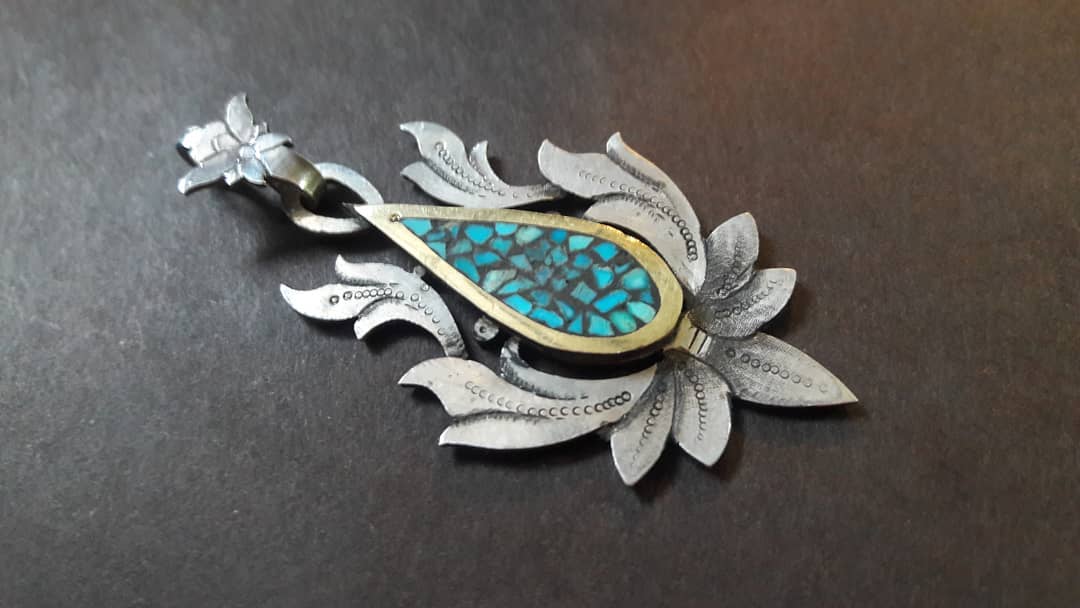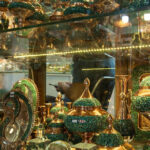
Traveling Through Iran’s Jewelry Markets
The Role of Silver in Iranian Jewelry: Historical Significance and Artistic Expression
Silver has long held a significant place in Iranian jewelry, valued for its beauty, versatility, and cultural importance. From ancient times to the present, silver has been used not only for its aesthetic appeal but also for its practical and symbolic significance. This article explores the historical role of silver in Iranian jewelry, its craftsmanship, and its enduring legacy in Persian culture.
1. Historical Significance of Silver in Iran
Ancient Traditions
Silver jewelry has been part of Iranian culture for thousands of years, with evidence of silver artifacts dating back to the Elamite civilization (circa 3200–540 BC). As one of the earliest civilizations in Iran, the Elamites produced intricate silver jewelry, often adorned with precious gemstones and detailed engravings.
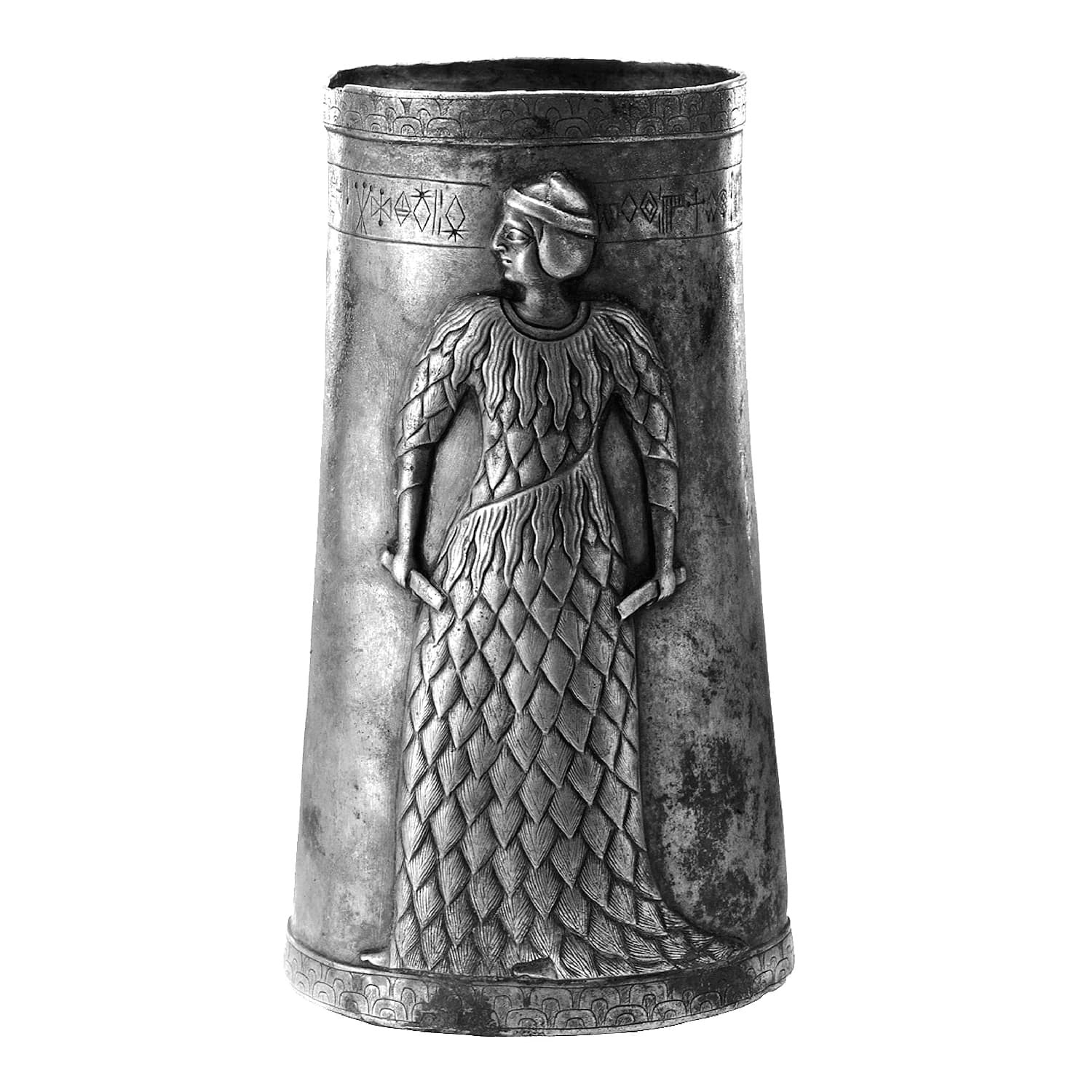
Old Elamite silver cup
- Persian Empire: During the Achaemenid Empire (circa 550–330 BC), silver became increasingly prominent in jewelry-making, often used to showcase wealth and status. The use of silver reflected the empire’s vast resources and trade connections with neighboring cultures, facilitating the exchange of artistic techniques and styles.
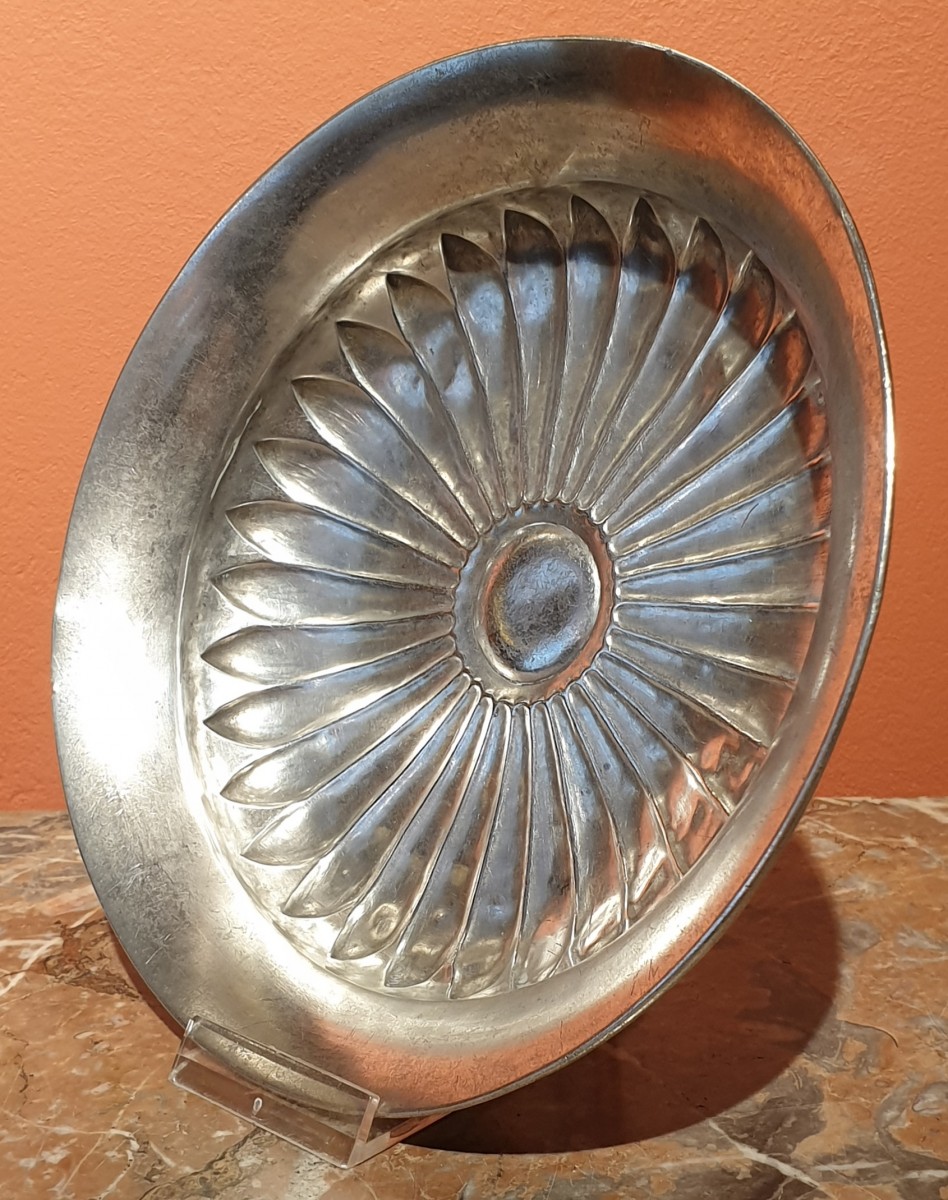
Achaemenid silver phiale – 5th century BC
Cultural Symbolism
In Persian culture, silver is associated with purity, wisdom, and protection. Many traditional beliefs attribute protective qualities to silver, making it a popular choice for amulets and talismans designed to ward off negative energies.
- Protective Jewelry: Silver pieces featuring geometric patterns, floral motifs, and inscriptions are often believed to bring good fortune and protection to the wearer. This spiritual aspect enhances the significance of silver jewelry beyond its decorative purpose.
2. Craftsmanship and Techniques
Iranian artisans have mastered various techniques to create stunning silver jewelry that reflects the country’s rich artistic heritage.
Filigree (Milileh-Kari)
- Delicate Designs: One of the most celebrated techniques in Iranian silver jewelry is filigree, where fine silver threads are twisted and shaped into intricate designs. This technique allows for the creation of delicate, lace-like patterns that are both beautiful and unique.
- Cultural Significance: Filigree’s work often incorporates traditional Persian motifs, making each piece a reflection of Iran’s cultural identity. Silver filigree jewelry is particularly popular in rings, necklaces, and bracelets.
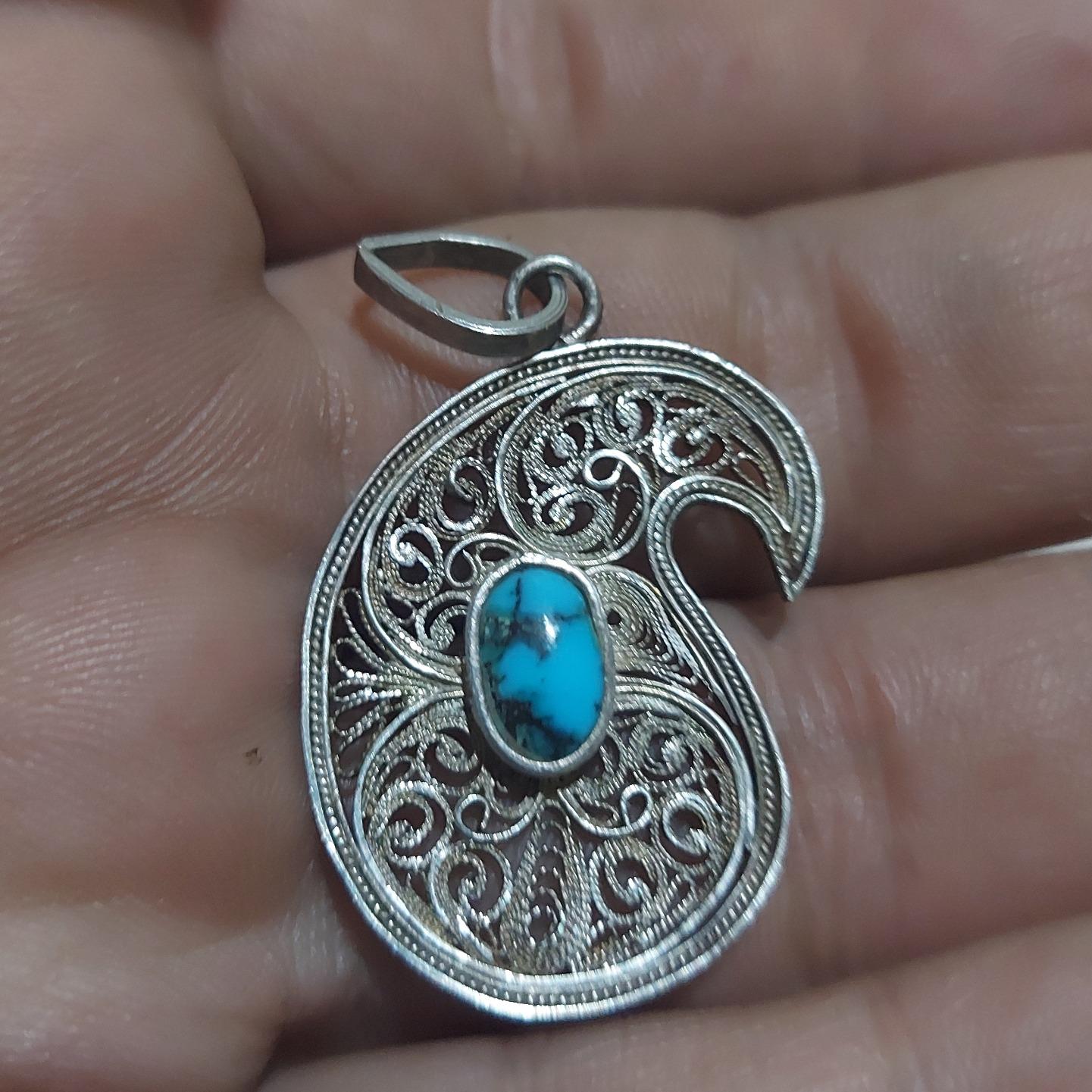
Filigree
Engraving (Qalam-Zani)
- Artistic Expressions: Engraving is another common technique used in silver jewelry, where artisans carve intricate patterns or inscriptions onto the metal surface. This adds depth and character to the pieces, often featuring Persian poetry, calligraphy, or geometric designs.
- Symbolism: Engraved silver pieces may carry personal or cultural messages, enhancing their emotional significance and making them treasured heirlooms.
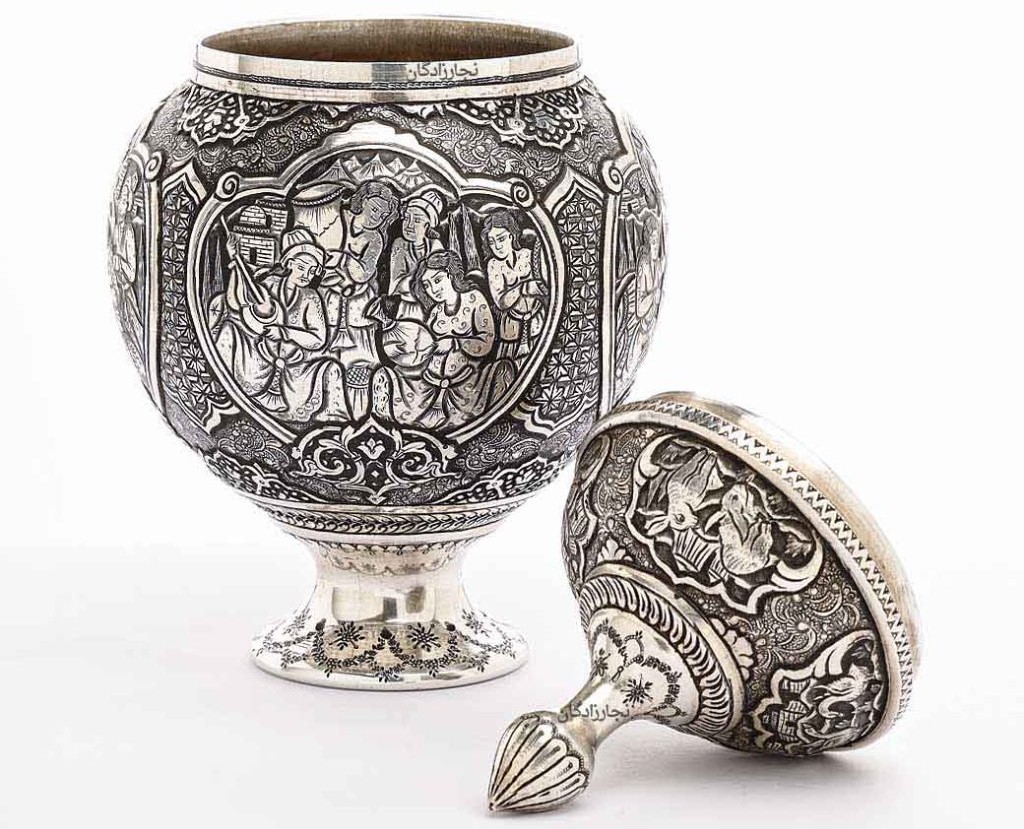
Isfahan silver dish Silver Engraving
3. Modern Use of Silver in Iranian Jewelry
In contemporary Iranian jewelry design, silver continues to play a crucial role, often blending traditional techniques with modern aesthetics.
Versatile and Accessible
- Affordability: Silver is often more affordable than gold, making it an accessible option for many consumers. This affordability has led to an increase in silver jewelry’s popularity among younger generations and those seeking unique pieces without the higher price tag of gold.
- Fashion Trends: Modern Iranian designers frequently incorporate silver into their collections, creating innovative pieces that appeal to contemporary tastes while respecting traditional craftsmanship.
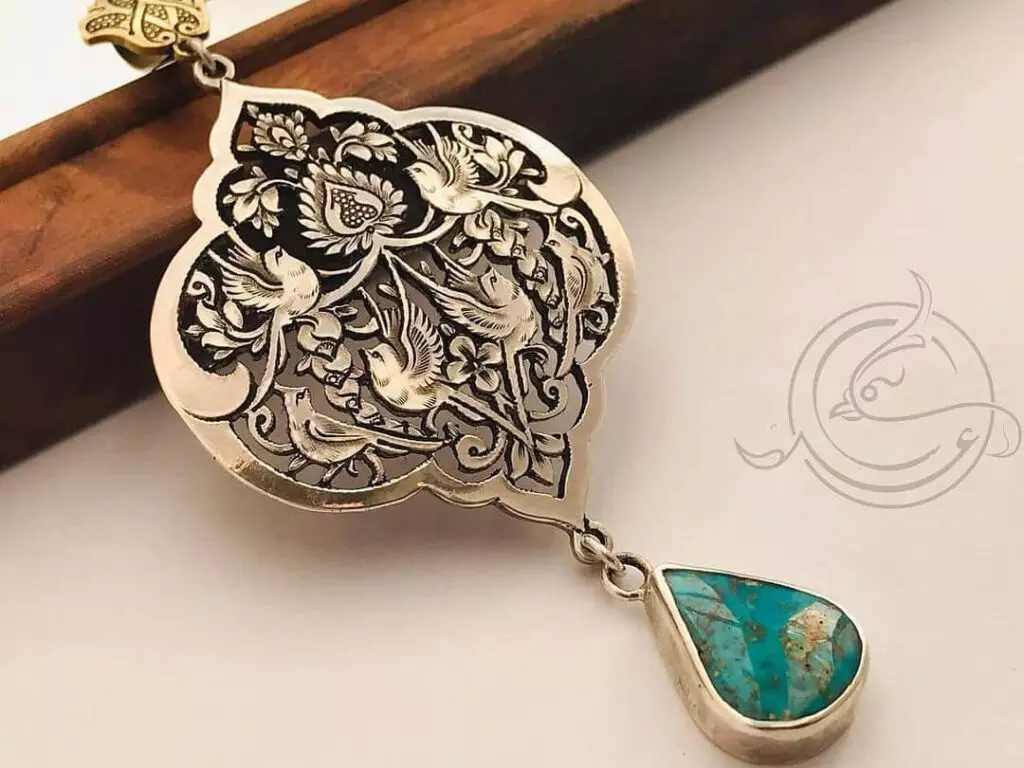
Silver Jewelry Design
Symbol of Cultural Identity
- Wearable Heritage: For many Iranians, silver jewelry serves as a connection to their heritage and cultural identity. Contemporary pieces often feature traditional designs, allowing wearers to celebrate their roots while embracing modern fashion.
4. Silver in Ceremonies and Traditions
Silver jewelry holds a special place in various Iranian ceremonies and cultural traditions, often marking significant life events.
Weddings
- Bride’s Adornments: In Iranian weddings, silver jewelry is commonly worn by the bride, often paired with gold pieces to create a balanced look. Silver adornments may include necklaces, bracelets, and earrings that feature intricate designs and gemstones.
- Gift of Silver: It is also customary for families to gift silver jewelry to the bride, symbolizing prosperity and good fortune in her new life.
Religious and Cultural Celebrations
- Symbolic Pieces: Silver jewelry is often worn during religious celebrations, such as Nowruz (Persian New Year), where pieces may feature motifs symbolizing spring, renewal, and protection.
- Cultural Heritage: In various regions of Iran, traditional silver jewelry is part of folk costumes, reflecting local customs and the diverse cultural tapestry of the country.
Conclusion: The Enduring Legacy of Silver in Iranian Jewelry
Silver continues to play an essential role in Iranian jewelry, serving as a symbol of beauty, protection, and cultural identity. Its historical significance, coupled with the mastery of traditional techniques such as filigree and engraving, showcases the rich craftsmanship of Iranian artisans.
At LetsGoYelo, we celebrate the beauty and artistry of Iranian silver jewelry, offering a collection that reflects the cultural heritage and timeless elegance of these exquisite pieces. Explore our selection to find jewelry that embodies the legacy of silver in Persian artistry!


